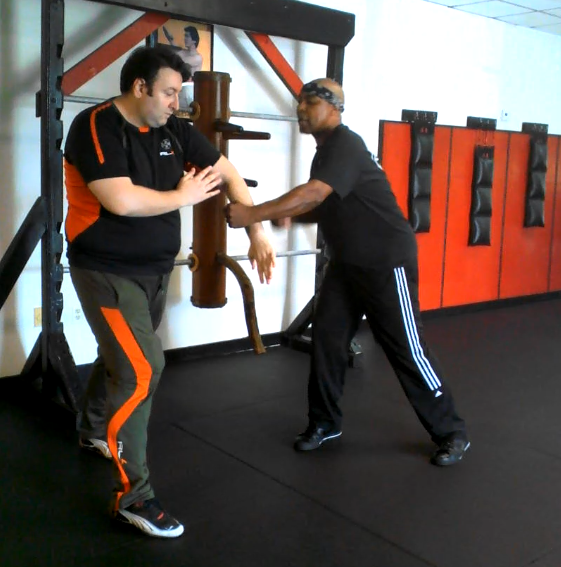What is Wing Chun training like?
By Maurice Novoa a master under the Yuen Kay Shan, Ip Man and Pan Nam lineages.
Introduction:
Wing Chun is a traditional Chinese martial art known for its practicality, efficiency, and emphasis on close-range combat. With a rich history dating back centuries, this martial art has evolved into a popular martial art style practiced worldwide. In this article, we will explore what the training entails, from its basic principles and techniques to the training process and benefits.
Basics of Wing Chun
Wing Chun is often initially pursued by individuals seeking to learn self-defense techniques. However, what sets this style apart from many other martial arts is its ability to transform from a practical skill into an enjoyable hobby. While self-defense remains a core focus, practitioners often find themselves captivated by the art’s elegance and intricacies, making it a lifelong pursuit.
As students delve deeper into Wing Chun training, they discover the beauty and satisfaction that comes with mastering its techniques. The precise movements, flowing transitions, and the concept of “flowing like water” that is the bases of Bruce Lee‘s famous quote on martial arts philosophy, all contribute to the art’s appeal. This combination of effectiveness and artistry makes it an engaging and enjoyable practice.
Moreover, the training methods foster a supportive and inclusive environment. Students often train together, exchanging knowledge, challenging each other, and building strong bonds. The camaraderie and shared passion for the art create a sense of community, further enhancing the enjoyment and fulfillment derived from Wing Chun training.
Over time, this style becomes more than just a means of self-defense. It becomes a part of one’s identity, a source of personal growth, and a way to connect with like-minded individuals. The joy of training, the pursuit of mastery, and the continuous learning journey make Wing Chun a fulfilling and lifelong hobby.
Through Wing Chun, individuals not only gain practical skills for self-defense but also find an enduring passion that brings them joy and fulfillment. It is this combination of effectiveness, elegance, and the sense of community that makes the training a truly enjoyable experience.
Training Process
Before engaging in rigorous training, practitioners begin with warm-up exercises to prepare their bodies for the physical demands of Wing Chun. These exercises focus on flexibility, strength, and conditioning. Once warmed up, students progress to drills and partner training, where they practice techniques and applications with a training partner.
Sparring and application play a crucial role in training. It allows practitioners to test their skills in realistic scenarios and develop their timing, distance management, and adaptability. As students progress, they advance through different levels and gain access to more advanced training methods and concepts.
Benefits of Wing Chun
Wing Chun training offers numerous benefits beyond self-defense. The physical aspect of training improves strength, flexibility, coordination, and cardiovascular fitness. Regular practice also enhances mental well-being by reducing stress, increasing focus, and building self-confidence.
Discipline is a fundamental aspect of this style, as it requires commitment and dedication to master the techniques and progress through the levels. Training also provides a sense of community and camaraderie, as practitioners often train together and support each other’s progress.
Common Misconceptions
There are several misconceptions surrounding Wing Chun. Some people underestimate its effectiveness due to its simplicity and focus on practicality. However, it’s techniques are designed to be efficient and effective in real-life self-defense situations. It is important to remember that the effectiveness of any martial art style relies on proper instruction and consistent training.
Comparing Wing Chun to other martial arts is also common, but each style has its strengths and unique characteristics. It’s emphasis on close-quarters combat and economy of motion sets it apart from other martial arts. It is not a matter of superiority but rather finding the style that suits an individual’s goals and preferences.
Frequently Asked Questions
Q: What age is suitable for Wing Chun training?
A: The training is suitable for individuals of various ages. Children can begin training under proper guidance, while adults can start at any age.
Q: Is Wing Chun suitable for women?
A: Absolutely! This style does not rely on physical strength but instead focuses on technique and leverage, making it accessible and effective for practitioners of all genders.
Q: How long does it take to become proficient in Wing Chun?
A: The time it takes to become proficient varies depending on individual dedication and training frequency. Consistent practice over several years is typically required to achieve a high level of proficiency.
Q: Can Wing Chun be used for self-defense in real-life situations?
A: Yes, It is known for its practicality and effectiveness in real-life self-defense scenarios. However, proper training and practice are essential to apply the techniques effectively.
Q: Can I train Wing Chun if I have no prior martial arts experience?
A: Absolutely! Wing Chun is accessible to beginners and does not require prior martial arts experience. Skilled instructors can guide beginners through the training process effectively.
Conclusion
Wing Chun training offers a unique and effective martial arts experience. Its principles, techniques, and structured training process provide practitioners with practical self-defense skills, physical fitness, mental well-being, discipline, and a supportive community. By understanding the fundamentals and dedicating oneself to regular practice, individuals can embark on a fulfilling journey of Wing Chun training.

